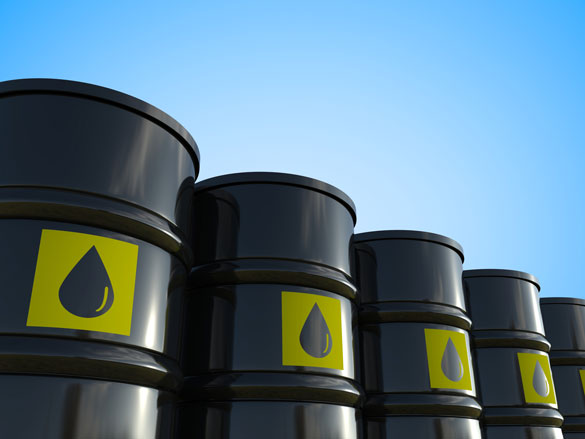The oil price has recovered, but does it have any further upside?
Possibly as much to OPEC+’s surprise as the wider market, their deep cuts to output of just a few months ago are already bearing fruit.
Oil prices have recovered some of their losses and it is not just producers like Russia that are claiming the market is getting close to balance again.
Lower your metal spend. Trial MetalMiner’s monthly metal buying outlook now.
OPEC output cuts to begin tapering as planned
There was always an end stop to the cuts, in line with the tapering plan agreed months ago. OPEC+’s production cuts will now ease from 9.7 million to 7.7 million barrels a day, the Financial Times reported this week.
That should mean a 2 million b/d increase in supply. However, because Iraq, Nigeria, and other quota-busters didn’t stick to previous limits, they will be required to continue to “compensate” for earlier under-compliance, with extra cuts.
So the ongoing reductions will in practice be closer to 8.1 million b/d, the Financial Times suggests. Theoretically, that marks an increase of fewer than 500,000 b/d.
OPEC+ is supposed to increase production again at the start of 2021, adding another 2 million b/d, the Financial Times reports.
But market conditions will be different by then.
OPEC’s own forecasters, for example, think that between the second and fourth quarters this year, demand for its crude will rise by almost 13 million b/d.
If that proves to be correct what will they do? Such a rise, if it actually happens, would see prices rise if OPEC output didn’t rise to meet it. Despite plenty of inventory around the world, speculators would bid up prices.
The elephant in the room, though, is the U.S.
U.S. production, future energy policy loom large
The U.S. is both the world’s largest oil and gas producer and by far the biggest market.However, it has seen production collapse in the face of OPEC’s induced price crash.
While funding to resume production for the fracking industry will be harder to find in the future, don’t count out U.S. shale if prices rise sufficiently.
Indeed, after briefly becoming a net oil exporter, the rapid closure of so many wells led the U.S. back to being a net importer in recent months. Last week, the rise in prices saw sufficient production come back online that the U.S. exported 75,000 barrels a day — more than it imported, The Economist advised.
OPEC may be quietly hoping for a Joe Biden victory in the upcoming U.S. presidential elections, at least in the short term.
The two contestants could not be further apart on energy policy. While Biden has steered clear of talking about fossil fuels, he appears firmly committed to massive investment in alternative energy sources and technologies. The corollary to that is a loss of support for the fracking industry, maybe even outright opposition to the industry, may become policy in time.
Reason states that a switch from fossil fuels to renewables will take a decade or more. The U.S. will need the fracking industry, even if some in a new administration hold their noses at the prospect. High oil and gas output caps prices for petrol and helps the country’s balance of payments by keeping out imports.
In the short term, it is unlikely policy changes would materially impact investment or output. Further down the line, refusal on oil pipelines and tougher environmental laws would depress the attractions for investors even further. Even then, however, we are looking months down the line, not years.
Oil demand below typical peak period level
Demand this year though is not yet powering ahead as OPEC suggests.
According to Oilprice.com, U.S. gasoline demand fell 5% last week, the second consecutive week of declines.
“Normally this two-week period would have been the peak demand period and we didn’t get it,” sources are quoted as saying, adding that “The recovery has been unwinding.”
Meanwhile, although China imported a record amount of crude in May, those oil flows fell back a bit in June.
The surge in imports in recent months has filled up inventories at attractively low prices. However, as that objective is reached, it may presage a slowdown in further imports.
Sign up today for Gunpowder, MetalMiner’s free, weekly e-newsletter featuring news, analysis and more.
Much depends on the path of the pandemic, both in terms of the imposition of new lockdowns and the depressing effect fear of the virus could have on travel and consumption.
The oil price, like the global economy, is in for a choppy ride.


Leave a Reply